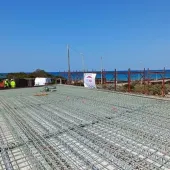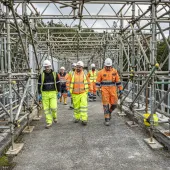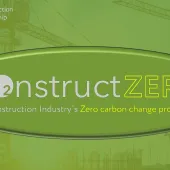Cement & Concrete Breakthrough initiative launched at COP28
Canada and the United Arab Emirates (UAE) have jointly launched the Cement & Concrete Breakthrough initiative at COP28 in Dubai.
The initiative, which was launched by the Honourable François-Philippe Champagne, minister of innovation, science and industry, and His Excellency Omar Ahmed Suwaina Al Suwaidi, undersecretary of the Ministry of Industry and Advanced Technology in the UAE, reaffirms Canada’s commitment to working with countries, businesses and international partner organizations to accelerate investments in the technologies, tools and policies that the cement and concrete industry needs to realize net-zero solutions by 2050.
Co-led by Canada and the UAE, the initiative will enable countries to share best practices on a range of policies and other measures to decarbonize the cement and concrete sector. It will engage a variety of partners at the global level, providing an opportunity for Canada to drive the adoption of low-carbon cement products and solutions that build on the global recognition of Canada’s Roadmap to Net-Zero Carbon Concrete by 2050.
Together with endorsing countries, international partners and the global cement and concrete industry, the breakthrough initiative will lead a shift that will make clean cement the preferred choice in global markets.
Speaking at the initiative’s launch, Champagne, said: “Innovation and investments in clean technology are crucial to building a competitive green economy. As a global leader in research and innovation, Canada is a key player in the net-zero carbon economy and is committed to laying the foundation of a competitive green cement and concrete industry that will create green jobs and build a clean future for all Canadians and the world. With the breakthrough initiative, we will help pave the way to achieve net-zero carbon cement and concrete by 2050.”
Created in 2022 at COP26, the Breakthrough Agenda provides a framework for initiatives that enable countries to accelerate decarbonization actions, beginning in five key sectors of the economy: power, road transport, steel, hydrogen and agriculture.
With the launch of two additional breakthrough initiatives at COP28—buildings, and cement and concrete—the Breakthrough Agenda now cover sectors responsible for more than 60% of global emissions.
A growing number of countries have joined Canada and the UAE to endorse the Cement & Concrete Breakthrough initiative, including Germany, Türkiye, Ireland and the United Kingdom.
Canada’s leading role in the Cement & Concrete Breakthrough initiative is part of the Action Plan to 2030.
Canada’s Roadmap to Net-Zero Carbon Concrete by 2050 aligns with Canada’s Emissions Reductions Plan—an ambitious plan to fight climate change while bringing sustainable, lasting economic prosperity to Canada, which charts a credible path to emissions that are 40% lower than 2005 levels by 2030.
Budgets 2022 and 2023 introduced new measures to help increase the commercialization and deployment of low-carbon technologies and resources and to support the continued growth of clean technology businesses across Canada, including $15 billion for the Canada Growth Fund to accelerate the investment of private capital in decarbonization and cleantech projects, help promote the diversification of Canada’s economy, help meet Canada’s climate targets and strengthen Canada’s economic resilience and capacity.
Cement production in Canada was valued at more than $1.3 billion in 2019.
Cement is a significant source of industrial CO2 emissions around the world, representing 26% of global industrial sector CO2 emissions in 2019.







